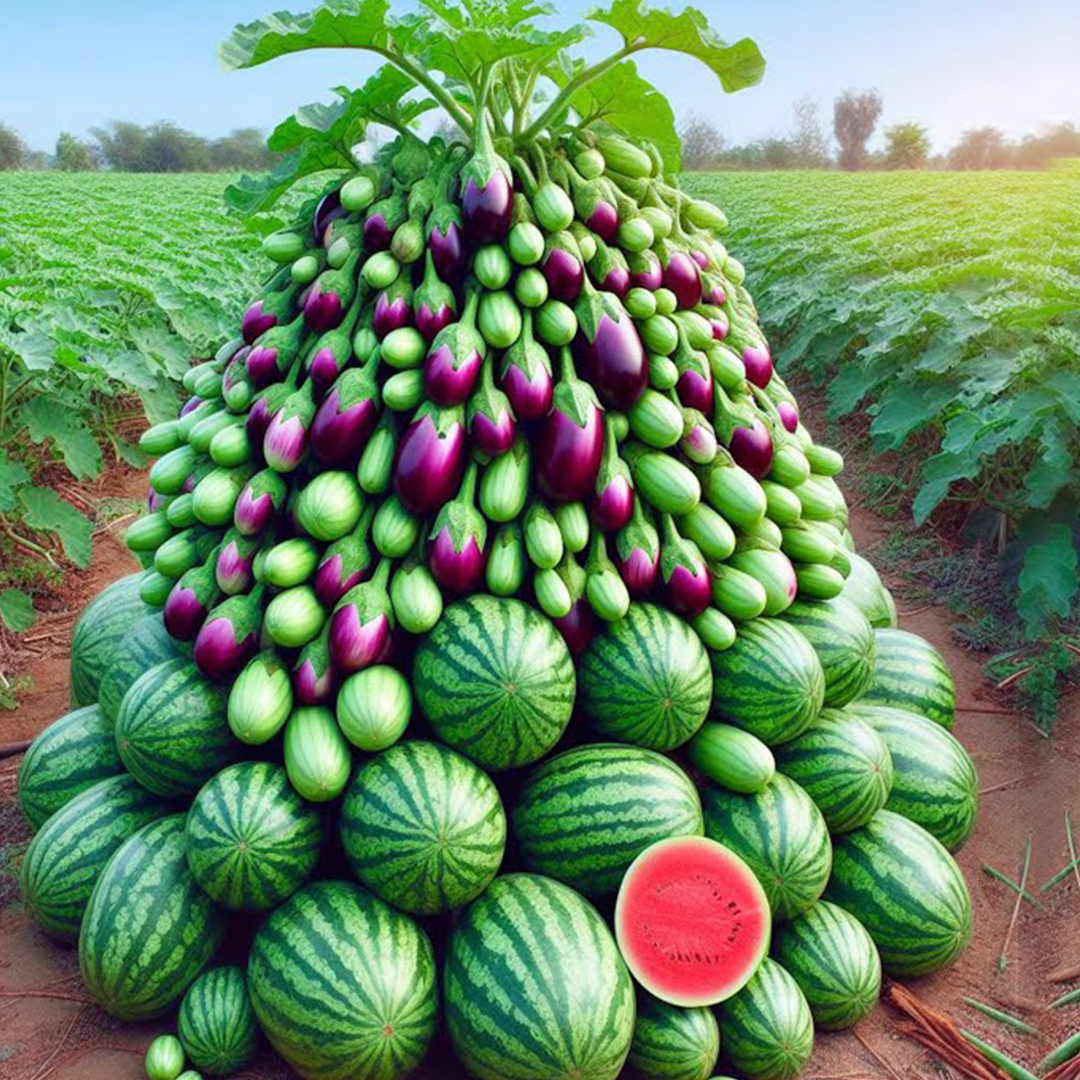New Watermelon Planting Methods to Harvest More Eggplants
In the ever-evolving world of agriculture, farmers and gardeners are constantly experimenting with new methods to increase yields, save space, and improve the quality of their crops. One unusual but increasingly popular trend is integrating watermelon planting methods to boost eggplant harvests. While at first glance watermelons and eggplants may seem unrelated, clever intercropping techniques and innovative planting strategies show that these two crops can actually complement each other when managed properly.
Understanding the Basics
Watermelons are sprawling, vining plants that love warm temperatures, well-drained soil, and full sunlight. They require plenty of space to spread out, but their large leaves create a natural ground cover that helps suppress weeds and retain soil moisture. Eggplants, on the other hand, are upright plants that thrive in similar warm conditions but do not spread as much. By using the watermelon’s natural growth habit, farmers can create a microenvironment that benefits eggplants as well.
Companion Planting Benefits
One key concept behind this method is companion planting. By planting watermelons and eggplants together, you can maximize land use and create beneficial interactions between the plants. The broad leaves of watermelons act as living mulch, keeping the soil cool and moist for eggplants. This reduces the need for frequent watering, which is especially valuable in regions with hot, dry summers.
Additionally, watermelon vines help shade the soil, preventing weeds from overtaking the garden beds. This means the eggplants have less competition for nutrients, allowing them to grow stronger and produce more fruit.
Improved Soil Health
Watermelons have deep root systems that break up compacted soil layers. This aeration effect improves water infiltration and nutrient absorption for nearby crops like eggplants. Healthy, well-drained soil is critical for eggplants to develop robust root systems and bear abundant fruit.
Some farmers also practice rotating crops in the same plot. After harvesting watermelons, the enriched soil is ready for the next cycle of eggplants, which can thrive on the residual nutrients left behind by the melon plants. This sustainable approach reduces the need for chemical fertilizers and helps maintain long-term soil fertility.

Smart Spacing and Layout
For this method to succeed, careful planning is essential. One recommended layout is to plant watermelons in wide rows with eggplants growing in between the vines. This spacing ensures that the eggplants receive enough sunlight and airflow to prevent fungal diseases while still benefiting from the shade and moisture retention provided by the melon vines.
Farmers often use raised beds or mounds for planting watermelons. By doing so, the vines can cascade down the sides of the beds, naturally covering the ground. The eggplants can be planted at the top or between the rows, making efficient use of space. This technique is ideal for small-scale gardens or farms that need to maximize every square meter.
Integrated Pest Management
Intercropping watermelons and eggplants can also help with pest control. Certain pests that target watermelons dislike the presence of eggplants and vice versa. This natural deterrent reduces the need for chemical pesticides, promoting a healthier and more environmentally friendly farm or garden.
For example, aphids are common pests for eggplants but are less likely to infest them when watermelon vines are nearby, as the vines attract beneficial insects like ladybugs and predatory wasps that keep aphid populations in check.
Water and Fertilizer Efficiency
Another advantage of this method is better water and nutrient management. The dense foliage of watermelon vines minimizes evaporation, helping the soil retain moisture longer. Drip irrigation can be installed to deliver water directly to the base of both plants, conserving water and ensuring each crop gets what it needs.
Additionally, organic mulching with straw or compost around the base of eggplants and melons further reduces moisture loss and adds nutrients back to the soil as it decomposes. Many growers also use compost tea or natural liquid fertilizers to provide a balanced nutrient boost without resorting to synthetic chemicals.
Tips for Success
To get the best results from this method, it is important to choose suitable watermelon and eggplant varieties. Smaller watermelon varieties like Sugar Baby or Crimson Sweet are easier to manage in mixed plantings, as they do not sprawl as aggressively as larger types. For eggplants, compact or bush varieties work well in limited spaces.
Regular pruning of watermelon vines can help control their spread and prevent them from overtaking the eggplants. Keep an eye out for signs of overcrowding and adjust your layout if needed.
Proper timing is also essential. Start watermelon seeds early indoors or in a greenhouse to give them a head start. When transplanting outside, wait until the soil temperature is warm enough for both crops to thrive. Staggering the planting can ensure that neither crop overshadows the other during critical growth periods.
Conclusion
Combining new watermelon planting methods with traditional eggplant cultivation offers an exciting opportunity for gardeners and farmers to increase their harvests in a sustainable, space-efficient way. This innovative approach demonstrates how thoughtful crop integration and natural processes can work together to produce healthier plants, higher yields, and a more resilient garden ecosystem. Whether you are a backyard gardener or a commercial grower, experimenting with these techniques could help you enjoy more delicious watermelons and an impressive eggplant harvest all in one season.



